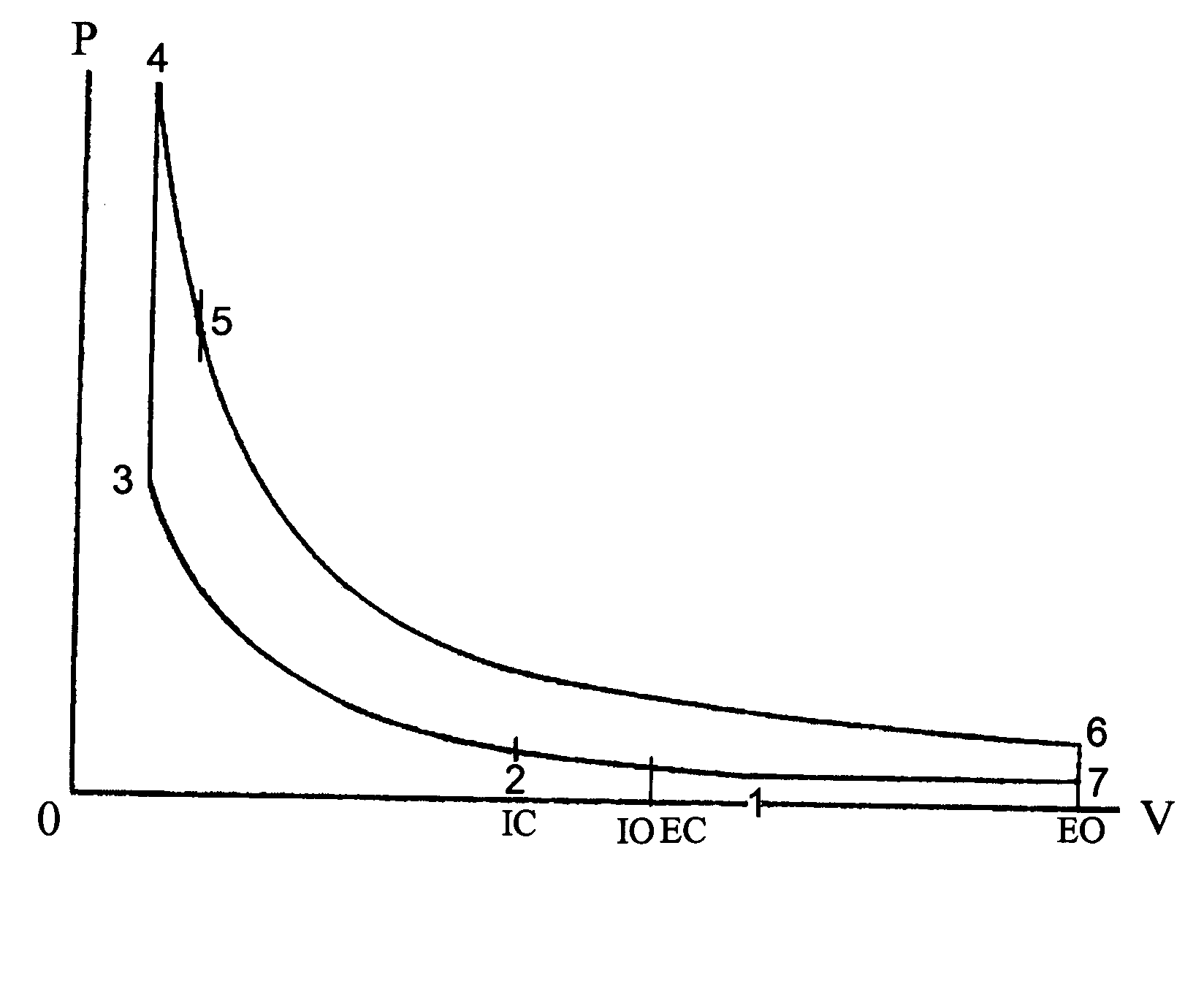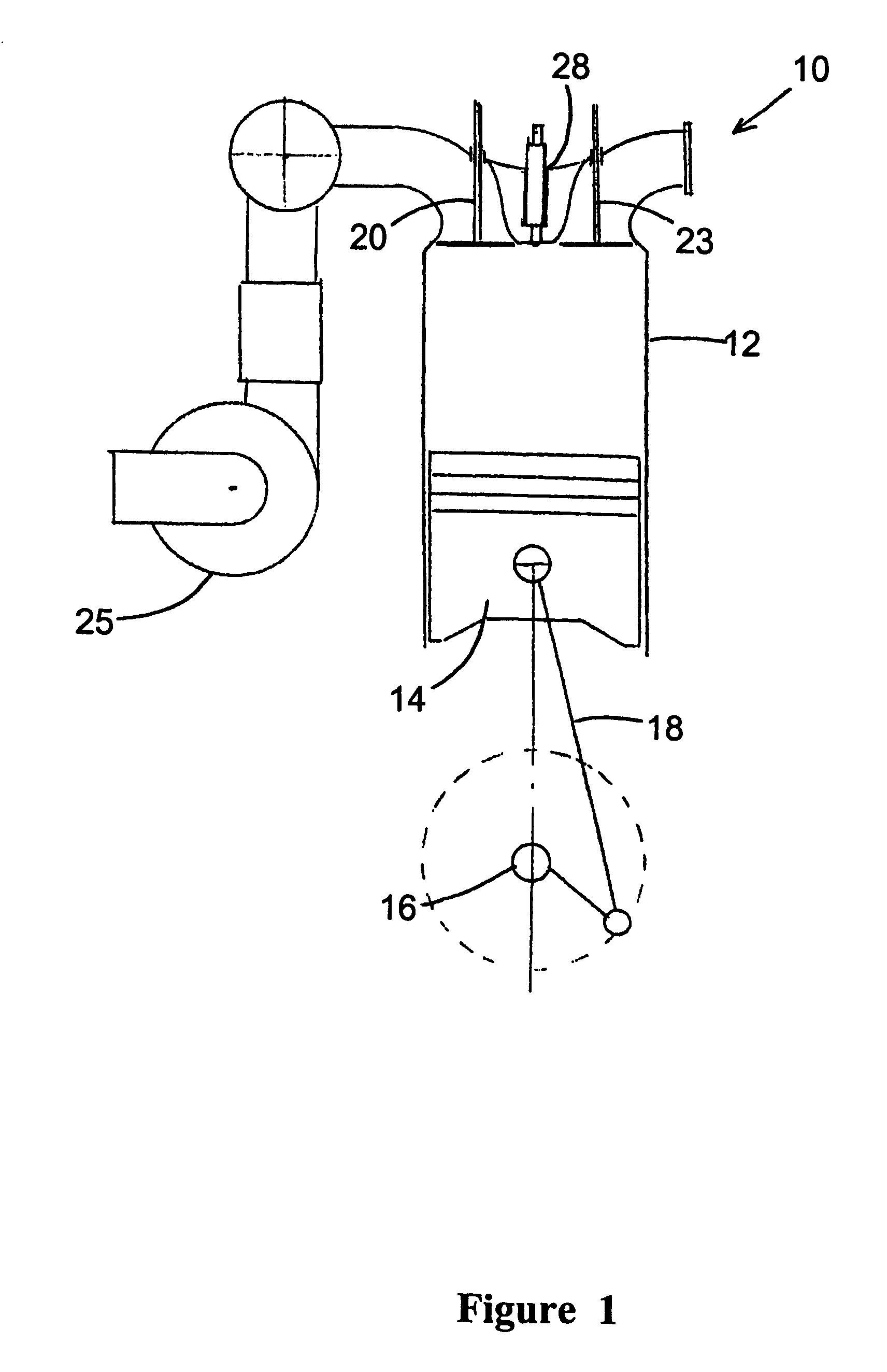Over expanded two-stroke engines
a two-stroke engine and expansion technology, applied in combustion engines, machines/engines, electric control, etc., can solve the problems of increasing the temperature of the already burned gas, increasing the pressure, and immaterial power and/or efficiency, so as to reduce the nox emission and reduce the co and hc emission
- Summary
- Abstract
- Description
- Claims
- Application Information
AI Technical Summary
Benefits of technology
Problems solved by technology
Method used
Image
Examples
case 1
4-5=0, Corresponding to an Over Expanded Otto Cycle
[0043]Starting at point 1 of FIG. 2, V1=15.6, P1=14.7, and T1=311 K. At point 3, the end of compression process 2-3, assuming V3=1.095 (for an overall compression ratio of 14.25), P3=606.2, T3=900 K. At point 4, T4=2000 K, Q3-4=0.308(2000−900)=338.9 Btu / lbm, P4=1347, and V4=V3=1.095. Assuming no third stage fuel injection and V6=19.5, the expansion ratio is 19.5 / 1.095=17.8. At point 6, P6=23.9 and T6=632.2. At point 7, V7=19.5, P7=14.7, and T7=632.2(14.7 / 23.9)=388.9. Q6-7=0.308(388.9−632.2)=−74.9 Btu / lbm and Q7-1=0.432(388.9−311)=−33.6. Total Q−=−108.5 and Efficiency=(338.9−108.5) / 338.9=68%, φ=338.9 / 1200=0.282
case 2
4-5=Q3-4 / 3=113.0 Btu / lbm
[0044]Without constant temperature combustion process 4-5 with Q4-5=113, burned mixture temperature would drop to T′ with T′=2000−113.0 / 0.308=1633 K and the volume reaches V5 with V5=V4(2000 / 1633)2.5=1.82. The constant temperature combustion process 4-5 brings back the mixture temperature at point 5 to 2000 K and pressure to P5 with P5=P4V4 / V5=810.4. The expansion ratio of expansion process 5-6 is equal to 19.5 / 1.82=10.7. At point 6, V6=19.5, P6=29.3, and T6=775. At point 7, T7=(14.7 / 29.3)T6=388.7, Q6-7=0.308(388.7−775)=−119. Q7-1=0.432(311−388.7)=−33.6. Total Q−=152.6 and Q+=451.9. Efficiency=(451.9−152.6) / 451.9=66.2%, φ=451.9 / 1200=0.376.
[0045]Without constant temperature combustion process 4-5 with Q4-5=169.5, burned mixture temperature would drop to T′ with T′=2000−169.5 / 0.308=1450.0 K. The volume reaches V5 with V5=V4(2000 / 1449.7)2.5=2.45. The constant temperature combustion process 4-5 brings back the mixture temperature at point 5 to 2000 K, and P5=P4V4...
PUM
 Login to View More
Login to View More Abstract
Description
Claims
Application Information
 Login to View More
Login to View More - R&D
- Intellectual Property
- Life Sciences
- Materials
- Tech Scout
- Unparalleled Data Quality
- Higher Quality Content
- 60% Fewer Hallucinations
Browse by: Latest US Patents, China's latest patents, Technical Efficacy Thesaurus, Application Domain, Technology Topic, Popular Technical Reports.
© 2025 PatSnap. All rights reserved.Legal|Privacy policy|Modern Slavery Act Transparency Statement|Sitemap|About US| Contact US: help@patsnap.com



